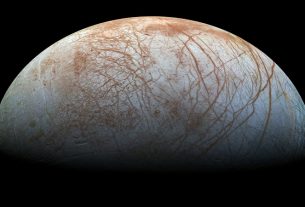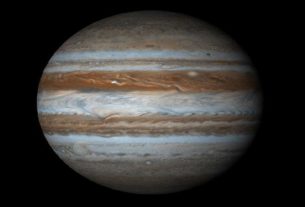Astronomers announce that they have identified a new type of star covered in a layer of “ash” produced by the combustion of helium. According to the authors of the study in question, these objects could be the fruits of a rare event of stellar fusion. The results of this work are published in the Monthly Notices of the Royal Astronomical Society.
Stars covered in helium ash
Once their fuel is exhausted, most stars explode, leaving only a dense core behind. This will be particularly the case for the Sun. This remnant, called a white dwarf, then slowly cools over billions and billions of years. That said, we do know that white dwarfs have atmospheres dominated by hydrogen or helium, hence the interest of this new discovery.
A team of German astronomers, led by Professor Klaus Werner, from the University of Tübingen, announces that they have identified two white dwarf stars whose surfaces are covered with carbon and oxygen, the “ashes” of helium. burning. The concentrations of these two elements can reach more than 20%. However, for this type of object, it is a very exotic composition.
This discovery is curious in that the presence of carbon and oxygen, as said above, implies the combustion of helium, which the white dwarfs are supposed to have finished burning for a long time. Even more puzzling, these new stars are hotter and larger than most objects of their kind, suggesting they could still be burning helium in their cores.
“These new stars are a serious challenge for our understanding of stellar evolution”, underlines Klaus Werner, co-author of this work.
The fruit of very rare stellar fusions?
Alongside the work of Professor Werner and his team, a second paper by a group of astronomers from the University of La Plata and the Max Planck Institute for Astrophysics offers a possible explanation for their formation.
“We believe that the stars discovered by our German colleagues could have formed during a very rare stellar merger event between two white dwarf stars”, explains Dr Miller Bertolami, of the Institute of Astrophysics of La Plata. Stellar mergers are known to occur between white dwarfs in nearby binary systems due to orbital shrinkage caused by gravitational wave emission. However, these mergers usually do not lead to the formation of carbon- and oxygen-enriched stars.
“Here, we believe that for binary systems formed with very specific masses, a carbon- and oxygen-rich white dwarf could be disrupted and end up on top of a helium-rich star, leading to the formation of these stars. “, continues the astronomer.
However, even with this assumption, it does not explain all the observed characteristics. The research team stresses that they need to tweak their models in order to assess whether these mergers can actually occur. This future work could also provide deeper insight into the late evolution of binary systems and how their stars exchange mass as they evolve.
In the meantime, the origin of stars covered with helium remains subject to debate.



